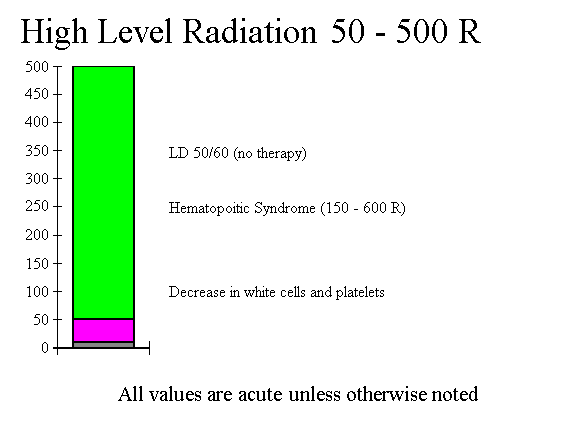
The previous graph (5-50 R) has been compressed by a factor of 10 and is illustrated as the lower portion of the above bar.
Once the exposure reaches 100 R given in an acute dose to the total body, there is a noticable effect in the bone marrow. This is temporary and resolves in 1 to 3 months. The changes are a decrease in the circulating white blood cells and platelets. At this level of exposure, there is no significant increase in bleeding or infection.
The hematopoitic syndrome occurs between 150 and 600 R. This syndrome is characterized by a more profound decrease in white blood cells and platelets. Depending on the decrease in the circulating levels of these cells, increased infection and bleeding may occur. It should be noted that these effects are not immediate and usually reach their peak at about 30 days post exposure. If the patient survives the first 60 days post exposure, recovery may be complete.
When a patient is exposed to an acute radiation dose of 350 to 450 R and receives no therapy, there is a 50% chance that death will occur within the first 60 days. This is known as the LD 50/60. It is a commonly used value by researchers when describing the relative sensitivity of organisms to the effects of radiation.